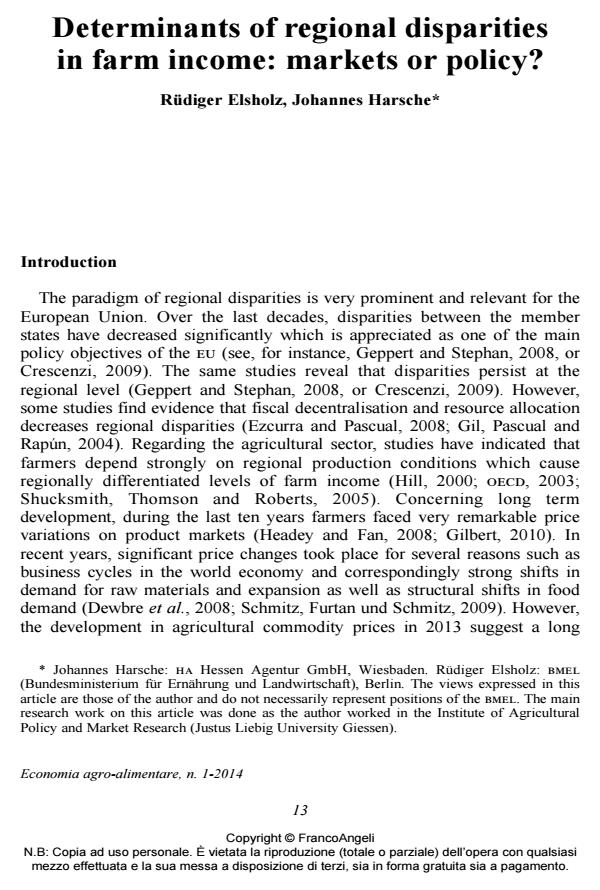Determinants of regional disparities in farm income: markets or policy?
Journal title ECONOMIA AGRO-ALIMENTARE
Author/s Rudiger Elsholz, Johannes Harsche
Publishing Year 2014 Issue 2014/1
Language Italian Pages 24 P. 13-36 File size 235 KB
DOI 10.3280/ECAG2014-001002
DOI is like a bar code for intellectual property: to have more infomation
click here
Below, you can see the article first page
If you want to buy this article in PDF format, you can do it, following the instructions to buy download credits

FrancoAngeli is member of Publishers International Linking Association, Inc (PILA), a not-for-profit association which run the CrossRef service enabling links to and from online scholarly content.
In this paper, the focus is on regional disparities in agricultural income, particularly in the context of agricultural price fluctuations and the impact of agricultural policy. In a first step, a theoretical model explaining regional disparities in farming revenues is presented. The following chapter contains an illustration of the development of agricultural prices as well as farming income with and without support. Additionally, we give an overview of regional disparities with regard to the instability of farm revenues, considering the issue of the stabilization effects of the cap. Analysis of the instability of farm revenues with and without support due to the adoption of different policies has revealed that there are remarkable differences among several of the policy scenarios. In order to get some information on causalities, we investigate regional disparities in farm revenues and analyse the differences for crop and animal production. The results of this analysis indicate substantial disparities between farms located in geographically different types of regions. That is to say, farms located in favoured agricultural regions obviously generate higher revenues than farms located in regions having to operate in poor conditions. Furthermore, investigation into recent regional changes in farm revenues finds that farms with a more balanced farming strategy generate the highest increase in farm revenues.
Keywords: Disparities in farm income, aggregate supply and demand analysis, regional economic activity
Jel codes: O18, Q11, Q18, R11, R12
- One or many European models of agriculture? How heterogeneity influences income creation among farms in the European Union Łukasz Kryszak, Thomas Herzfeld, in Agricultural Economics (Zemědělská ekonomika) /2021 pp.445
DOI: 10.17221/154/2021-AGRICECON
Rudiger Elsholz, Johannes Harsche, Determinants of regional disparities in farm income: markets or policy? in "ECONOMIA AGRO-ALIMENTARE" 1/2014, pp 13-36, DOI: 10.3280/ECAG2014-001002